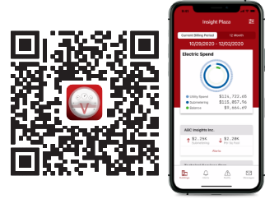How Submetering Pays Off During Design, Construction, and Beyond
Submetering is great for more than Day 2 operations. See where else you can save.
When people talk about submetering (and hey, how can you not?), they’re usually talking in terms of tenant utility billing or equipment optimization.
That’s when the submetering story really comes alive, when the building is complete and fulfilling its purpose.
But we think that waiting until the building’s already operating is thinking too small. If we want to end up with a building that is easy to operate, easy to maintain, and easy to pay for – at every phase of the building’s life cycle – we need to consider how to achieve those goals from the very beginning.
So let’s talk about the three “days” of a building (0, 1, and 2) and how submetering in each of these phases impacts long-term building performance and cost.
Day 0 – Finance & Design
Every building (or every remodel, because this framework works for renovations as well) starts as an idea. Someone takes it into their head to build a particular type of building (or a specific type of upgrade). This owner takes this idea to a developer (contractor), who consults with design specialists like architects and design engineers about exactly what the building should be. Changes are easier at the beginning than later, although every project is constrained by budget, regulation, experience, and of course physics.
From deciding on form, materials, and methods, Day 0 benefits from understanding how the final product will be used. Without a clear understanding of the owner’s specific plans for the building, such as how the spaces will be used, what types of tenants it will have, how the operating costs will be covered, etc., it’s difficult-to-impossible to design a building that an owner will be happy operating. Thorough discussions about tenant needs and cost recovery lead to greater clarity about building systems – sometimes resulting in systems that solve operational problems before they start.
Day 1 – The Build Itself
Also known as construction and initial commissioning, Day 1 is all about the actual implementation of the plans. And although meters are often installed during Day 1 in accordance with ASHRAE 90.1, builders don’t always use them to their full potential (if they use them at all).
Why is submetering valuable in this phase? Here are four reasons to start with:
- The value of kicking the tires of the system early rather than just before the hand-off to the owner. Testing the system sooner means you have more time to be sure there aren't any issues before handing over the keys.
- If you want to minimize utility costs throughout the build. AC units on full and lights left on for months can be a runaway train of needless expenses. Whether the build takes one year or five, monthly submetering keeps costs down and eliminates disputes over who pays.
- To reduce confusion on Day 2. Once the ribbon is cut, the operations team that takes over will be entirely new to the system. The more experience the Day 1 crew has with it, the better the hand-off.
- To recoup utility costs accurately as soon as tenants move in. Everybody likes a clean start in a new relationship. Instead of estimating those early costs, owners can build trust and authority with their tenants by providing an unequivocal understanding of their usage from the get-go.
Day 2 – Normal Operations
Day 2 is what everyone’s most familiar with – the daily use of the building. After a while, it's usually well-understood that the submetering system is critical to operating the building, maintaining the operational assets, recovering tenant utility costs, validating performance, and tracking energy usage.
But in those first weeks – when the keys have just been handed over to the owner – very little about the building is obvious or understood. The new facility team often is left to imagine the rationale of the teams who went before and who operated the building under different circumstances. Have these systems only been on override throughout the build, or is there data to illuminate how the new girl functions? Is the system ready to bill tenants and able to maintain temperature and airflow where it counts at a cost you can afford, or are you actually taking a “hope for the best” approach?
The points raised here aren't new to anyone who works in real estate development. But what you may not have thought about is how much submetering adds to both the process and the results when it's incorporated early: controlling costs on both Day 1 and Day 2 and increasing owner and tenant satisfaction. Who doesn't want more bling for less cha-ching?
Overwhelmed by submetering options?
Interested in adding submetering to your design but not sure what components to pick? If you’re in the NYC area, we’ll come to you (no charge!) with our own specifications guide and help with selection.
(utilivisor is unaffiliated with any meter or related component manufacturer. Our recommendations are always based only on what's best for your circumstances.)
About utiliVisor
Your tenant submetering and energy plant optimization services are an essential part of your operation. You deserve personalized energy insights from a team that knows buildings from the inside out, applies IoT technology and is energized by providing you with accurate data and energy optimization insights. When you need experience, expertise, and service, you need utiliVisor on your side, delivering consistent energy and cost-saving strategies to you. What more can our 45+ years of experience and historical data do for you? Call utiliVisor at 212-260-4800 or visit utilivisor.com

